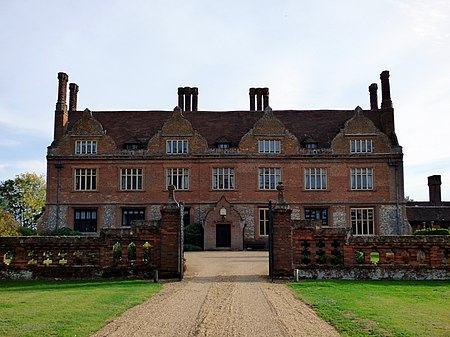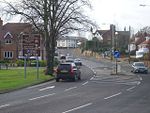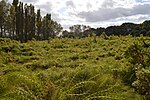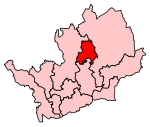Aston Bury
Country houses in HertfordshireGrade I listed buildings in HertfordshireGrade I listed houses

Aston Bury is a manor house near Aston, Hertfordshire, England. It is Grade I listed building.It was built in the mid 17th century, possibly by the Boteler family, restored in 1883 for Captain William Edward Freeman O'Brien and restored again in 1908-09 for Vernon A. Malcolmson. The house is now a luxury apartment block. The building consists of a long rectangular block in two storeys with cellars and attics and two large gabled stair wings at the rear. The ground floor walls are made of flint, banded with brick and with brick dressings. The first floor has timber framing, infilled and faced with brick. The roof is steep and made of red tiles.
Excerpt from the Wikipedia article Aston Bury (License: CC BY-SA 3.0, Authors, Images).Aston Bury
East Hertfordshire Aston
Geographical coordinates (GPS) Address Nearby Places Show on map
Geographical coordinates (GPS)
| Latitude | Longitude |
|---|---|
| N 51.879 ° | E -0.148 ° |
Address
SG2 7EH East Hertfordshire, Aston
England, United Kingdom
Open on Google Maps








